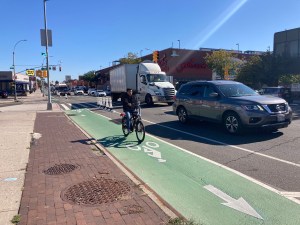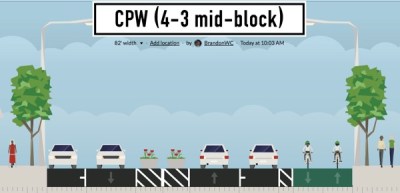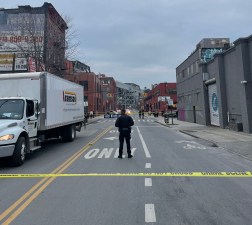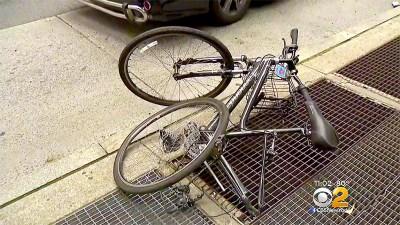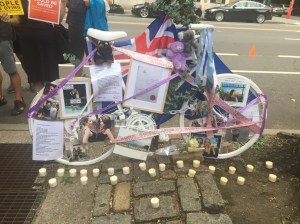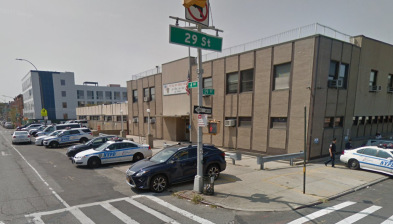E-Cyclist Rider Killed on Roadway that Once Had a Protected Bike Lane … Until DOT Downgraded It

Someone should go to jail — and maybe not just the driver.
A teenager in a 4,000-plus-pound Chevy pickup truck driving the wrong way on a dangerous Queens overpass struck and killed an e-bike rider who was in a bike lane that the city had once built as a “protected” bike lane, but then downgraded to mere paint after drivers destroyed all the flex-posts that once secured the lane.
According to police, the 18-year-old behind the wheel of the assault truck was traveling southbound on Honeywell Street on Monday at around 7:22 a.m. when he veered into the northbound lanes and flattened 32-year-old Thomas Panto of nearby Corona, who was traveling northbound and was approaching the intersection of Northern Boulevard.
Panto was taken to Elmhurst Hospital, where he died. The driver, whose name was not released, was not initially charged, cops said, though the investigation is ongoing to determine why he crossed the yellow line.
The driver’s culpability is massive, but the city bears some responsibility; Honeywell Street between Skillman Avenue and Northern Boulevard was initially built as a protected bike lane in 2017, and labeled as such on the city’s official bike map. But the flex-posts that the city installed when the protected bike lane was built were so often destroyed by drivers that the city downgraded the route — a key path between the new protected bike lane on Skillman to the bike lane on Northern — to a regular painted lane by 2018 (see photos at the top of this post).
Here’s how that looked on the city’s bike map:

Obviously, flex-posts would not have saved Panto from the force of a 4,000-pound truck. But the existence of the protected lane suggests strongly that the city Department of Transportation knew that the route was an important one — and that cyclists needed protection.
https://twitter.com/steve_ohh/status/1447641541703606273?s=12
“Thomas Panto was killed on … a street with a painted, unprotected bike lane,” Transportation Alternatives Executive Director Danny Harris said in a statement. “It is like every painted, unprotected bike lane in New York City: a parking lot or travel lane, regularly abused by drivers, so much so that even Google Street View shows a dumpster parked there. At best, painted bike lanes are useless, but at worst, they are a reckless invitation from the City of New York to its residents, inviting New Yorkers to ride a bike while failing to adequately protect them.
“Vision Zero is not failing,” he added. “Mayor de Blasio is failing.”
Thanks to a 2017 ruling in the state’s highest court, New York municipalities are legally responsible when they are aware of road dangers yet do not fix them. That decision, known as the Turturro ruling, stems from a 2004 crash when a speeding driver struck 12-year-old Anthony Turturro as he rode a bike on Gerritsen Avenue. A civil trial jury awarded Turturro $20 million, finding the city 40 percent responsible for the crash. The city appealed, but the state’s Court of Appeals upheld the award for Turturro by a 6-1 vote.
“This decision is a game-changer,” lawyer Steve Vaccaro said at the time. “The court held that departments of transportation can be held liable for harm caused by speeding drivers, where the DOT fails to install traffic-calming measures even though it is aware of dangerous speeding, unless the DOT has specifically undertaken a study and determined that traffic calming is not required.”
Streetsblog reached out to the DOT for comment. After initial publication of this story, agency spokesman Seth Stein said, “Any loss of life on our streets is a tragedy, and we will look into the specifics of this incident following the NYPD investigation. If additional safety measures are warranted, we will make them.”
